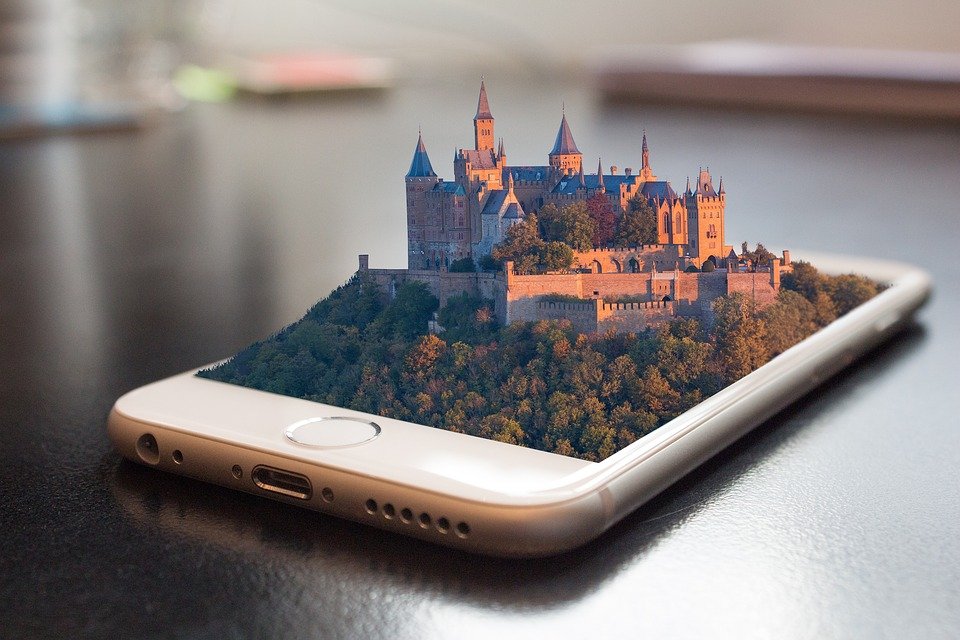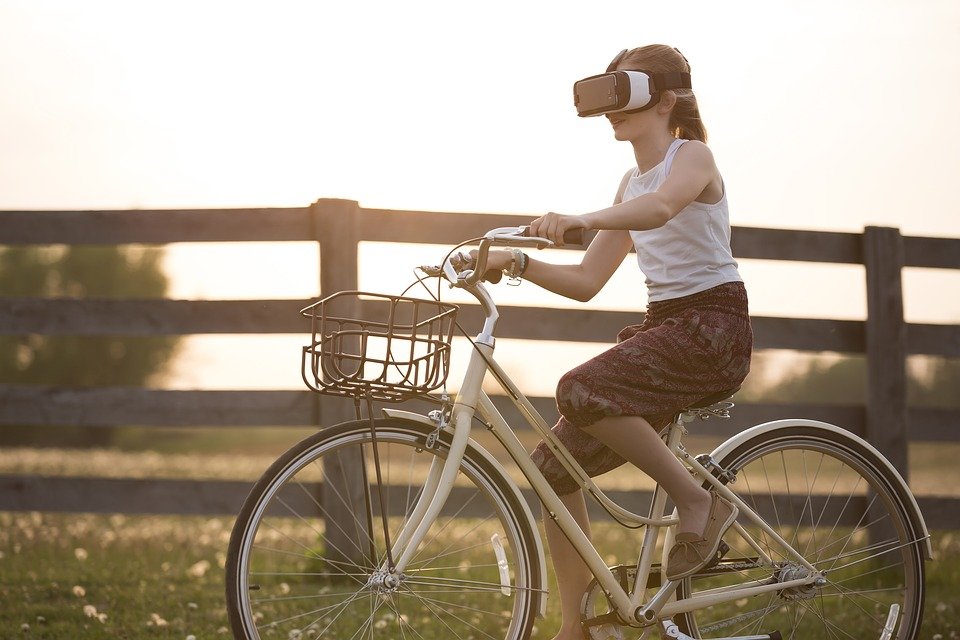Kate Harveston breaks down the ways in which virtual reality is changing the entertainment industry today, from the workplace to the theatre.

Craving a getaway to Tahiti to sip umbrella drinks? What if you could do so by simply walking over to your computer or flipping on the TV? Wanting to experience one of the world’s largest roller coasters without leaving the couch? Guess what? That soon may become possible, too.
Virtual reality (VR) continues to change the entertainment world at a speed rivaling that of a Japanese bullet train. While typical gaming and entertainment fare require little interaction on the part of the user (just sit back and grab a bag of popcorn), VR technology offers users a more personalised entertainment experience where users interact with the magical world they’ve stumbled into via funky eye goggles. As VR technology advances, innovations will no doubt continue to delight those wishing to slip away into their own private Sims Idaho.
What Is Virtual Reality?
The second definition in the latest edition of Webster’s dictionary defines the term “virtual” as “being on or simulated on a computer network.” The word implies a reality eerily similar to the real thing. Users can barely differentiate actual, real-life sensations from those produced by a specially designed pair of VR glasses that transport the wearer to their destination of choice.
Such technology allows individuals who find travel difficult for financial or physical reasons the ability to potentially experience the travails and triumphs of scaling Mt. Everest or diving to the murky depths of the Pacific Ocean’s Mariana Trench. Virtual reality already adds an element of depth to some online interactions. For example, those enjoying the marvels of up-to-date cell phone technology can snap a photo of their cat in 3D, a valuable advance for pet lovers everywhere.

Virtual reality devices have existed in more primitive forms for decades. Roller coaster enthusiasts, for example, have long enjoyed “riding” their favourite speed demons with the aid of special goggles or other devices that simulated the experience of actually stepping on board. Many popular theme parks now allow riders with special needs to enjoy the coaster experience while remaining safely grounded using VR.
Indeed, virtual reality offers a whole new world of opportunity for those living with physical or mental disabilities. People lacking legs or motor function can now enjoy the exhilaration of reaching a mountain peak or swimming in crystal-clear Caribbean waters. Some research indicates VR technology will assist those with autism in learning new ways of interacting with people despite their difficulty with reading human emotions.
VR and the Entertainment Industry
Without a doubt, one industry benefiting from the virtual reality craze remains the entertainment business. The human need to continually seek new and innovative ways to relax and energise leads many to the theatre or concert hall.
The music industry uses VR to allow those in rural areas far from concert venues or those with certain diseases rendering exposure to crowds and loud noise painful to enjoy their favourite artists even when they cannot attend live. VR concerts give fans around the world a front row seat to some of the hottest bands for a fraction of the price of VIP admission.

For example, take this augmented reality version of Norwegian band A-Ha’s classic hit “Take On Me.” If you’re a Zumba instructor and you didn’t get up and dance to this, I’ll personally eat my sports bra.
Likewise, virtual reality technology possesses the ability to bring dead artists back to life, at least in fans’ earbuds or on a screen. Wishing you could return to the days of Marley at the One Love Peace Concert even though you were born well after the Woodstock era? Not a problem! Want to experience the primal energy that made Keith Richards and the rest of the Rolling Stones timeless? VR makes this possible.
But VR technology extends far beyond recreating concert experiences. Remember when kids discussed Smell-O-Vision as a real possibility? Today, such olfactory magic is possible, although audiences remain divided on whether odour enhances the viewing experience.
VR and Potential Career Paths
With technology changing on the daily, VR opens a host of employment opportunities for graduates seeking to transform the world through innovation. In today’s competitive job market, knowledge of VR technology pays off big time in terms of earning power.
Those seeking careers in the virtual technology sector do well to follow a computer science path. Courses in everything from Software Design to Python, Java and C++ establish a firm foundation for a career in this highly competitive field. The techie world steadily expands as developers share new knowledge. College undergrads considering a career in a technology-related field should consider courses in UX and UI. UX — or user experience — designers deal with how consumers perceive and interact with a computer program’s or app’s functionality. Conversely, UI — or user interface — techs design how users view a program or app’s layout and overall aesthetic.
Other potential careers in the VR sector include working with major technology innovation corporations such as Apple and Google. Because the VR field remains in its infancy despite recent innovations, those seeking a career in this dynamic field can set themselves apart from other applicants with their knowledge of how the overall user experience drives new and repeat sales.
Virtual reality can likewise help techie workers displaced by layoffs find well-paid positions to replace their previous income. As relatively few new graduates possess an intimate knowledge of how the user experience drives sales revenue, even those walloped by Silicon Valley layoffs during the Great Recession can rejuvenate their careers. VR creates a wealth of new opportunities for those impacted by the tech crunch while improving the value customers receive.
VR and Gaming Technology
Gone are the days of subpar graphics and games with the realism of an early black-and-white film. Today’s VR technology immerses gamers in a world nearly as realistic as our own.
VR reaps enormous profits for video game manufacturers. Experts predict the gaming industry will grow from 9 billion to 215 billion dollars by 2021. VR indisputably ranks among the top growth industries in the U.S. and worldwide.
Gaming VR elevates interaction to new heights. Instead of watching a simulation of a race car on screen, gamers can now enjoy a simulation of racing so realistic they feel as if they’re actually behind the wheel. Instead of shadowboxing, users feel as if they’ve stepped into the Octagon — minus the risk of bruises, cuts and broken bones, of course.

VR also allows sedentary gamers to physically interact with technology while elevating their heart rates and getting them off the couch. Considering the obesity epidemic in the U.S. and worldwide, VR gaming provides an innovative way to get people moving and burning calories.
VR gaming consoles come with a fairly steep price tag, but this has opened up a new revenue stream for entrepreneurial gamers. VR arcades have opened across the globe for those who crave the experience of virtual gaming but who can’t afford to invest hundreds of dollars in gear.
How Do VR Games Work?
Think back to when the Nintendo Wii first emerged on the market. One of the features that made the system so attractive was the Motion Plus controller. This motion-tracking technology recreated the experience of swinging a golf club or baseball bat or rolling a strike without heaving a 16-pound ball down an actual alley. Gamers embraced this setup as it rated real physical skills, not just the ability to locate cheat codes online.
VR gaming technology works like the early Wii on serious steroids. Instead of merely experiencing the feel of swinging a bat that weighs mere ounces, VR allows gamers to wield a real baseball bat at simulated pitches matching those thrown by real MLB all stars. With a VR headset, these pitches look — and more importantly, feel — so realistic, many users find themselves jumping back a bit at first.
The sensors in VR gloves — or even full body suits, in some cases — interact with a computer program that interprets a player’s motions and reacts to those movements. Soon, haptic feedback suits will likely evolve beyond sights and sounds to include the sensations of weight, pressure and even taste.
VR also opens the doors for users to explore information in 3D. Instead of solely reading about ancient Egypt on the web, people will someday soon be able to investigate simulated ruins as if they were genuinely walking the halls of the Great Pyramid.
VR Beyond the Arcade

VR holds tremendous promise that extends well beyond making playtime more interactive. The educational world stands to benefit immensely from this emerging technology.
Imagine for a moment you’re in med school and about to perform your first appendectomy. The procedure would obviously be highly supervised, but in terms of confidence, wouldn’t you feel even more at ease had you completed a virtual surgery first?
Such practical applications of VR technology for use in medical school training may soon exist in universities nationwide. Eventually, VR may allow top surgeons to operate on patients on the other side of the country by virtually controlling a robot holding a scalpel. Given the shortages in certain specialists, VR can potentially expand healthcare access to people who may otherwise have to book pricey travel and pay hefty hospital fees.
And VR holds the potential to unlock even more scholarly doors. It can enhance just about any classroom subject by allowing students to immerse themselves in their studies rather than merely reading about historical events or watching educational videos depicting the anatomy of a bullfrog.
What if, for example, schoolchildren could virtually explore different eras and geographies and interact with historical figures? How might our understanding of the world we share change if we could trek through the rainforest without ever leaving the couch? If we could exchange virtual greetings with members of indigenous tribes?
Potential Dangers of VR
While VR does open up new worlds and wonders, like any technology, it also has potential pitfalls. For example, some gamers may become so lost in their virtual worlds, they neglect their real-life needs. As far back as 2012, one hardcore gamer lost his life due to playing a video game for 40 hours straight. If previous technologies can cause that degree of addiction, what might the much more realistic VR do to those seeking to escape reality today?
Another potential danger involves VR stimulating certain real-world traumatic events so accurately, players may feel as if they’ve suffered physical harm. In 2016, a female gamer playing QuiVr experienced what genuinely felt like a sexual assault, even though it took place in the virtual world. Besides the potential VR holds for re-victimising those who are suffering from PTSD due to traumatic events, the legal quagmire may tie up courts for years — can perpetrators of assaults face prosecution when their actions took place while sporting a VR headset?
The Future of VR and the Entertainment World
As technology advances, the entertainment world will inevitably change with it. Instead of wearing funky cardboard red-and-green glasses to watch a 3D movie, theatre-goers will don VR headsets and truly immerse themselves in the action from scene one to the closing credits.
The movement to bigger, better, more realistic action in movie and video game markets opens a world of opportunity for investors to collaborate on luxurious new entertainment venues. Many theatres have already added amenities such as full bars, improved snack selections and even table-side meal service. Introducing a VR component by adding viewing rooms replete with headsets or even movie seats that rock and slide along with the on-screen action will delight audiences. Staffed VR arcade rooms can give busy parents a break so they can catch a flick while their children play.
If used correctly, VR technology holds the power to transform the entertainment world. Here’s to the glory of technological progress!

